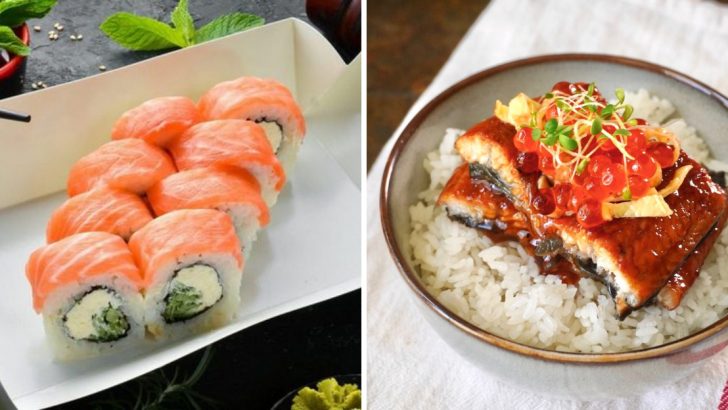Japanese restaurants offer a world of exciting flavors beyond the usual suspects on most menus. While some popular dishes might seem like safe choices, they often miss the mark on authentic Japanese cuisine.
Ready to level up your dining experience? Let’s explore which common dishes to pass on and what to try instead for a true taste of Japan.
1. Skip: California Rolls
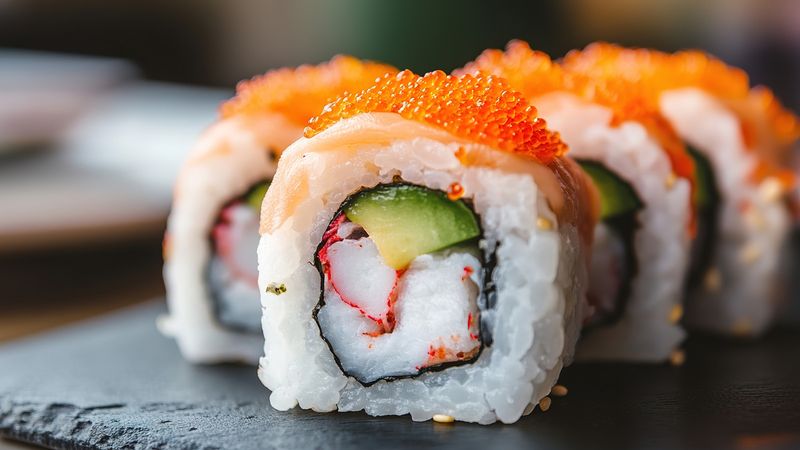
California rolls might be the gateway sushi for beginners, but they’re about as Japanese as apple pie. Created in Los Angeles during the 1960s, these avocado-cucumber-crab concoctions were designed to ease Americans into sushi without the “scary” raw fish.
The problem? You’re missing out on authentic flavors while paying restaurant prices for something that’s basically the kiddie pool of Japanese cuisine. Most Japanese people wouldn’t recognize this as traditional fare.
2. Order Instead: Unagi Don
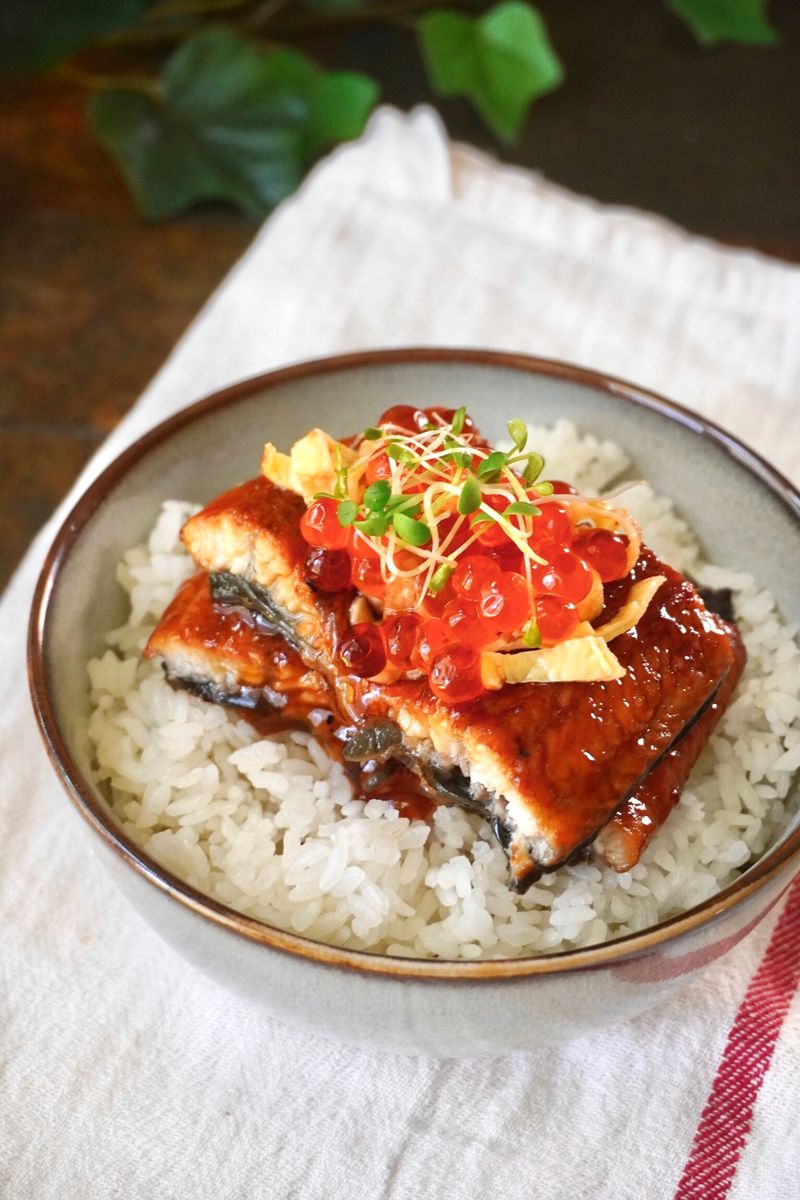
Forget bland California rolls and treat yourself to Unagi Don! This heavenly bowl features caramelized freshwater eel glazed with a sweet-savory sauce that’ll make your taste buds dance with joy.
The eel is grilled to perfection, creating a delicate crispy exterior while maintaining buttery tenderness inside. Each piece rests atop steaming rice that soaks up the rich, umami-packed sauce. Japanese people consider unagi an energy-boosting food, particularly valuable during summer months.
3. Skip: Teriyaki Chicken
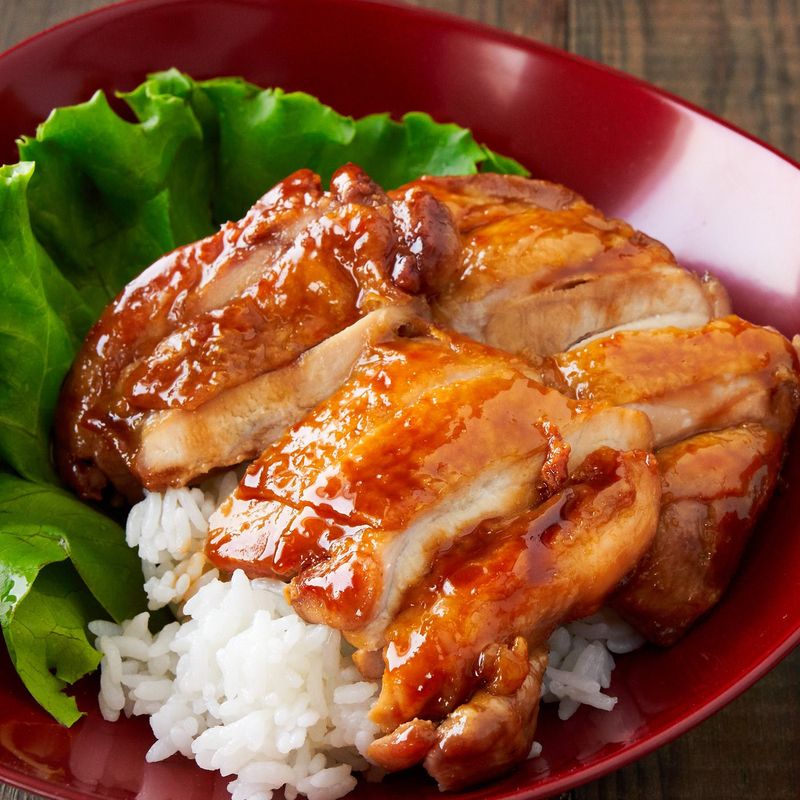
Ah, teriyaki chicken—the dish everyone orders when they’re afraid to try something new. What arrives is usually a sad, overly sweet affair: dry chicken drowning in a sticky, corn-syrup-laden sauce that bears little resemblance to authentic Japanese teriyaki.
Most American versions use bottled sauces packed with preservatives and artificial flavors. The chicken often lacks proper marination time, resulting in a surface-level flavor bomb without any depth.
4. Order Instead: Chikuzenni
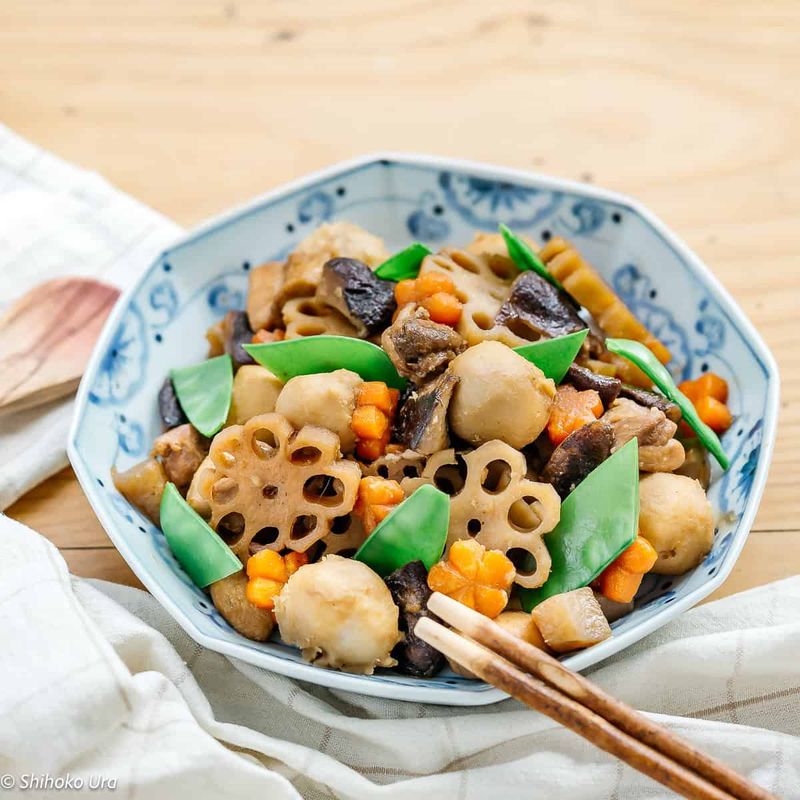
Ditch that one-dimensional teriyaki chicken and discover Chikuzenni! This homestyle Japanese classic features tender chicken pieces slowly simmered with root vegetables in a delicate dashi broth that lets each ingredient shine.
Carrots, lotus root, shiitake mushrooms, and bamboo shoots absorb the subtle flavors of the broth while maintaining their distinct textures. The cooking technique, called nimono (simmered things), is fundamental to Japanese home cooking but rarely showcased in Western Japanese restaurants.
5. Skip: Tempura Ice Cream
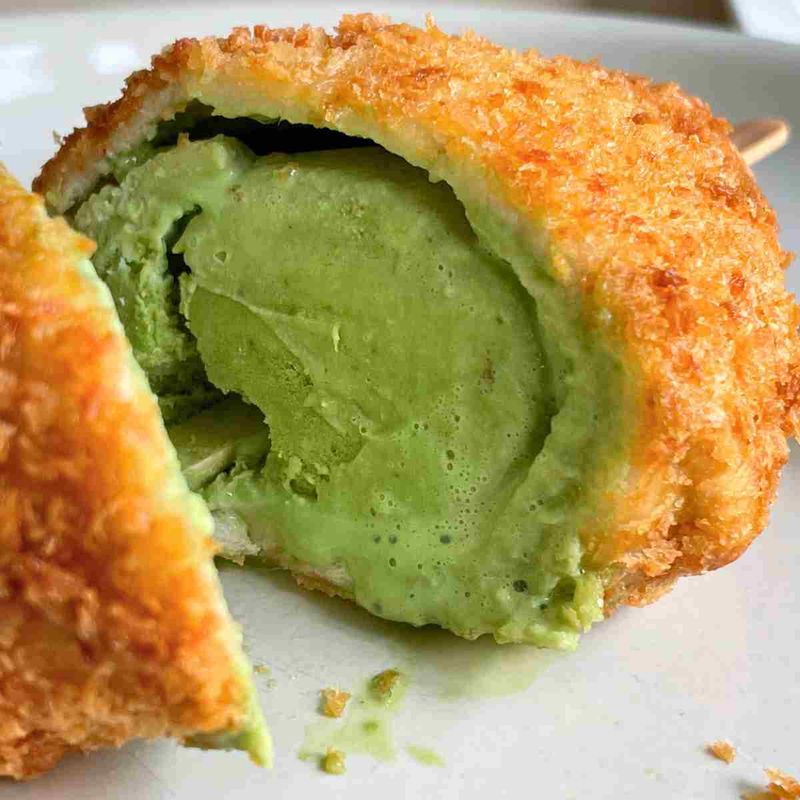
Tempura ice cream is the culinary equivalent of a magic trick that impresses no one. This bizarre creation—vanilla ice cream wrapped in pound cake, deep-fried in tempura batter—is purely American invention masquerading as Japanese cuisine.
The contrast between hot and cold might seem novel for three seconds, but the reality is often disappointing: soggy batter, rapidly melting ice cream, and a heavy, oily finish. Authentic Japanese desserts celebrate subtlety and seasonal ingredients, not deep-fried dairy bombs.
6. Order Instead: Omurice
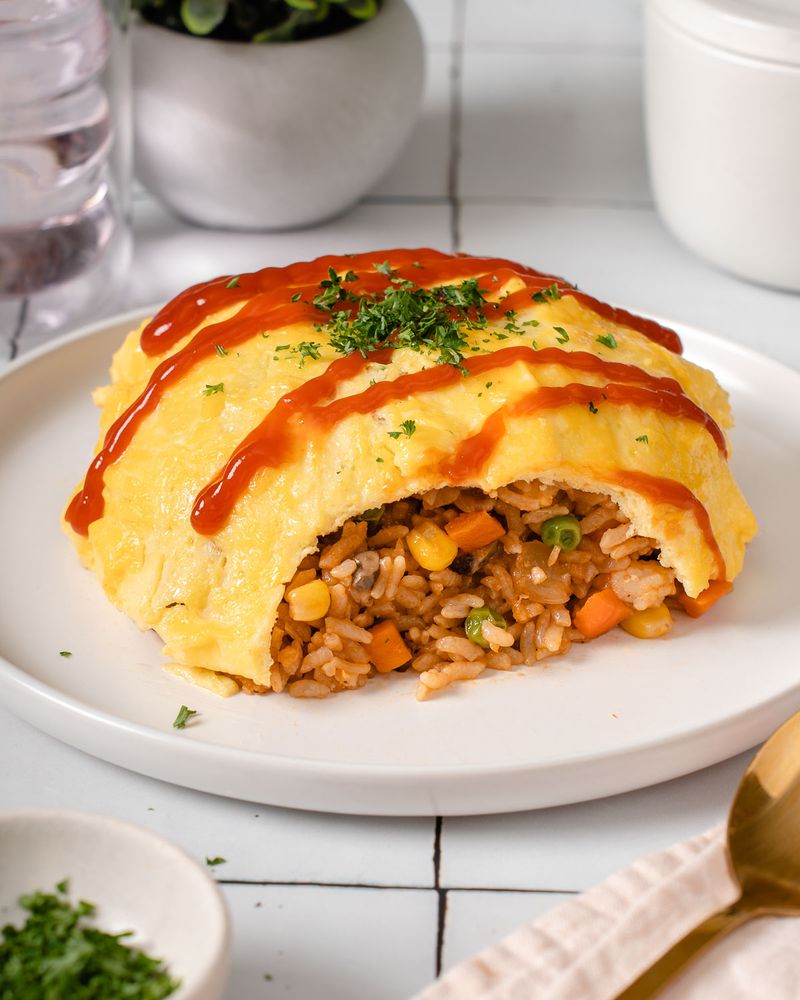
Forget that weird fried ice cream and embrace Omurice! This beloved Japanese comfort food wraps a thin, fluffy omelette around seasoned fried rice, creating a perfect harmony of textures and flavors that actually makes sense.
The rice inside is typically cooked with ketchup, chicken, and vegetables, giving it a slightly tangy, savory profile. What makes great omurice special is the technique—the egg should be creamy and just barely set, often dramatically cut open tableside to cascade over the rice mound.
7. Skip: Spicy Tuna Roll
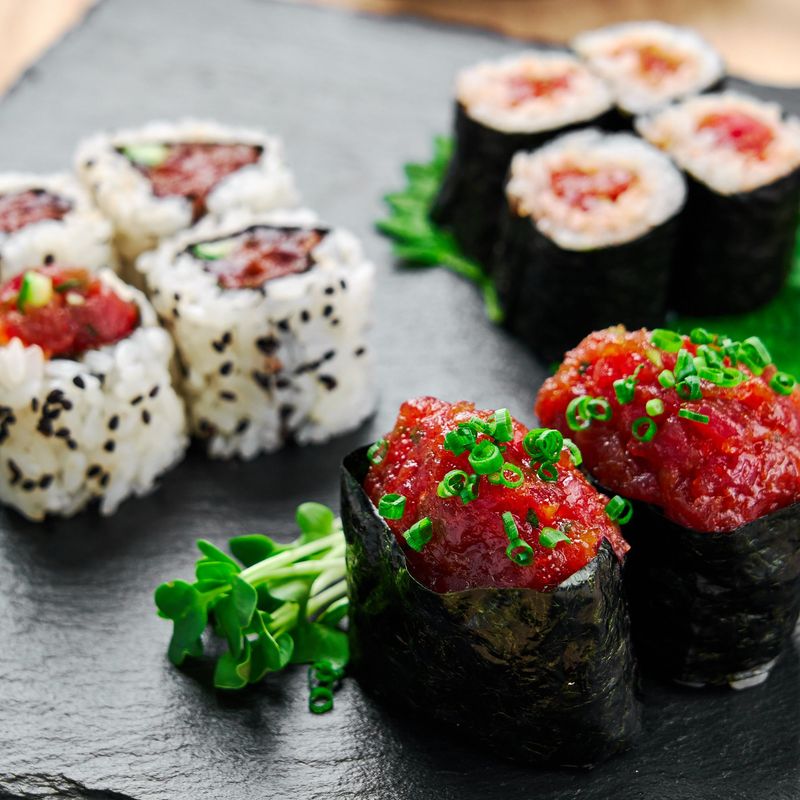
Spicy tuna rolls are where mediocre fish goes to hide. This American creation typically uses scraps of tuna that wouldn’t make the cut for proper nigiri, masked with spicy mayo and rolled up with rice.
The heavy sriracha-mayo mixture obliterates any nuance in the fish flavor. It’s essentially the equivalent of drowning a steak in ketchup—a way to mask lower quality ingredients. Many restaurants use older tuna that’s starting to oxidize, counting on the spice to cover any off-flavors.
8. Order Instead: Nikujaga

Dump that spicy tuna roll and warm your soul with Nikujaga! This hearty home-style dish combines tender beef, caramelized onions, and velvety potatoes simmered in a sweet-savory dashi broth that delivers pure comfort in every spoonful.
Created in the late 19th century for the Japanese navy, Nikujaga (literally “meat-potato”) has become a cornerstone of Japanese family cooking. The thin-sliced beef becomes meltingly tender while the potatoes absorb the rich broth flavors. Snow peas or green beans often add a fresh pop of color and texture.
9. Skip: Philadelphia Roll
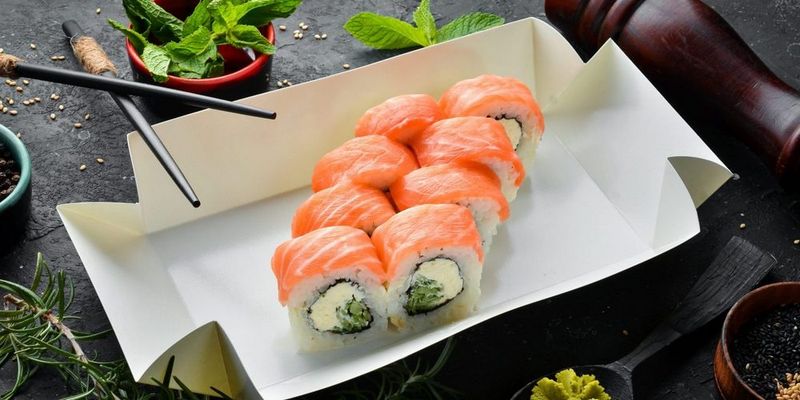
Philadelphia rolls commit the cardinal sin of Japanese cuisine: putting dairy where it absolutely doesn’t belong. Cream cheese has no place in traditional Japanese food, period.
This American abomination pairs cold fish (usually salmon) with blocks of dense, fatty cream cheese—creating a textural and flavor clash that would make any Japanese sushi chef weep. The heavy dairy completely overwhelms the delicate fish flavor and creates an odd mouthfeel that fights against the rice.
10. Order Instead: Hamachi Kama
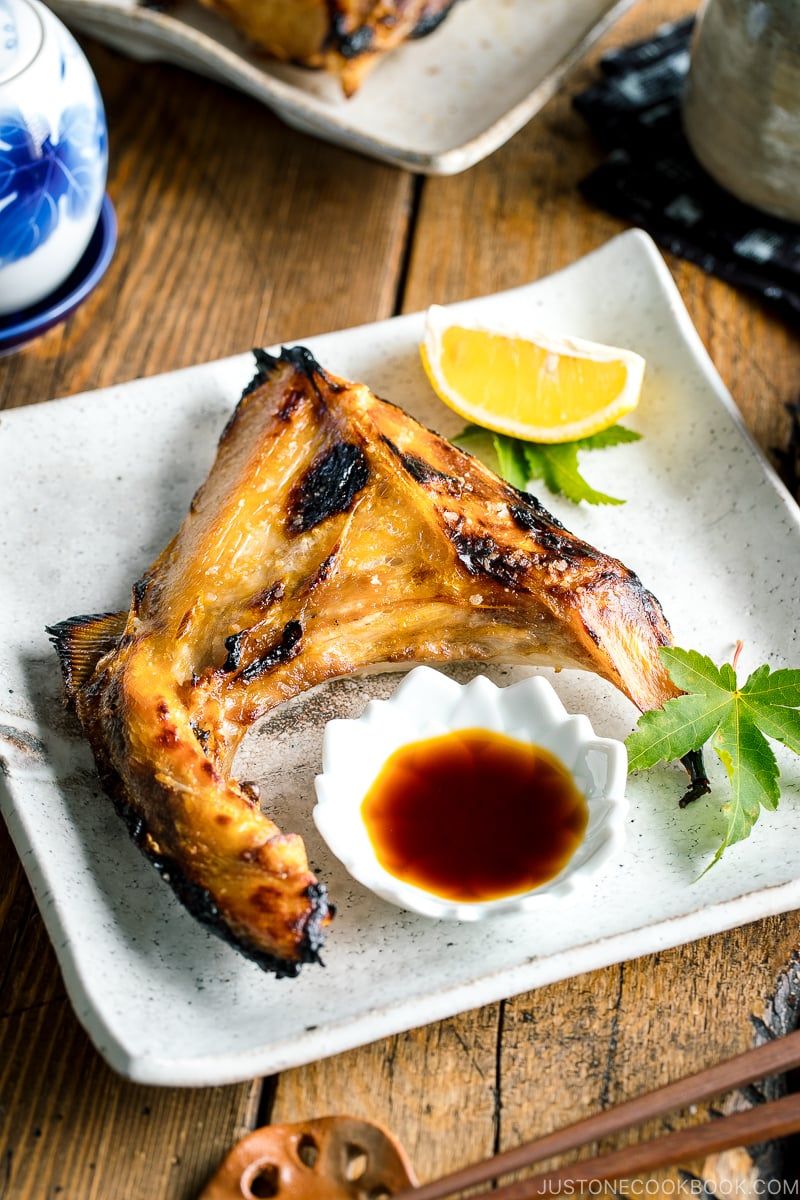
Forget cream cheese-stuffed abominations and discover Hamachi Kama! This insider’s secret is the grilled collar (cheek) of yellowtail fish—a part most restaurants in America would discard but Japanese chefs treasure for its incredible flavor.
The collar contains the fattiest, most succulent meat on the fish, becoming buttery-rich when grilled over high heat. A light seasoning of salt and a squeeze of lemon are all that’s needed to highlight the natural sweetness of this premium cut. The contrast between crispy skin and moist flesh creates a textural masterpiece.
11. Skip: Chicken Yakisoba
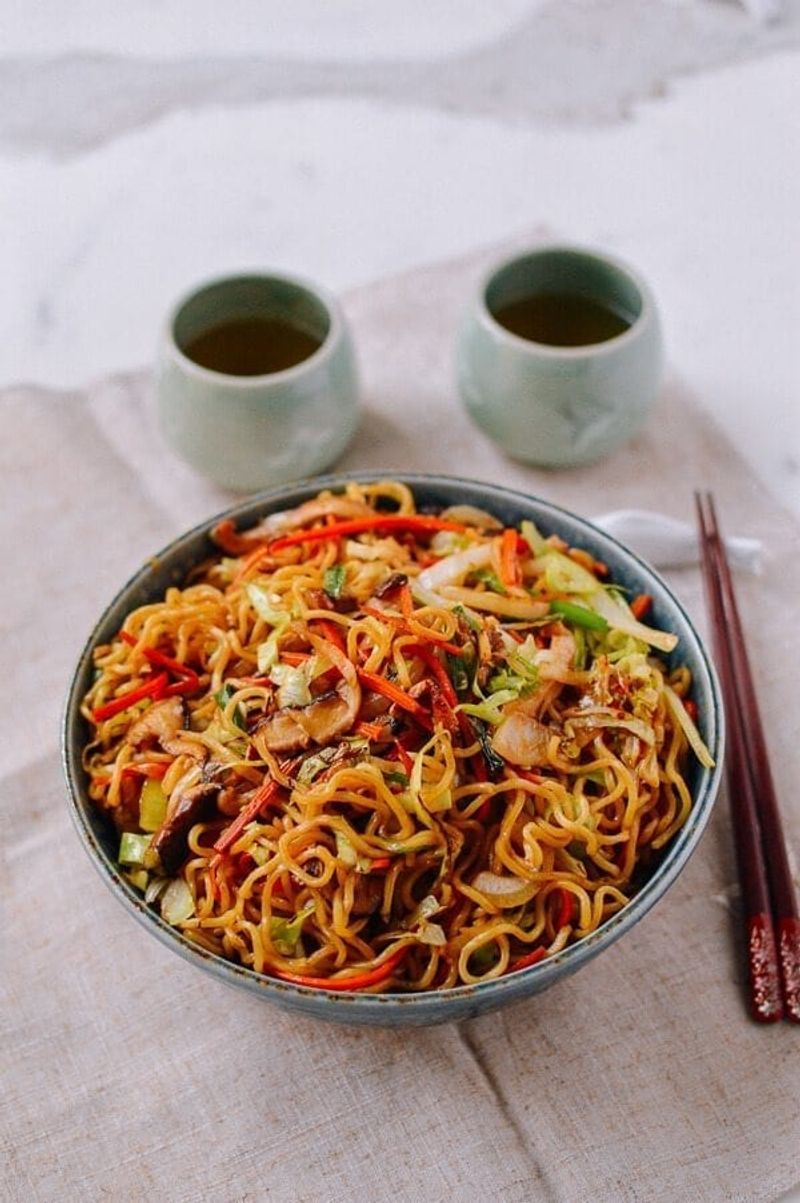
Chicken yakisoba in American Japanese restaurants is often a sad, soggy affair. What should be a vibrant stir-fried noodle dish frequently arrives as a gloopy mess of overcooked noodles swimming in bottled sauce.
The chicken is typically bland, cut too thick, and lacks proper caramelization. Vegetables are afterthoughts—limp, sparse, and lacking variety. Most disappointing is the sauce: many restaurants use pre-made yakisoba sauce loaded with corn syrup and preservatives rather than building layers of flavor with fresh ingredients.
12. Order Instead: Takoyaki
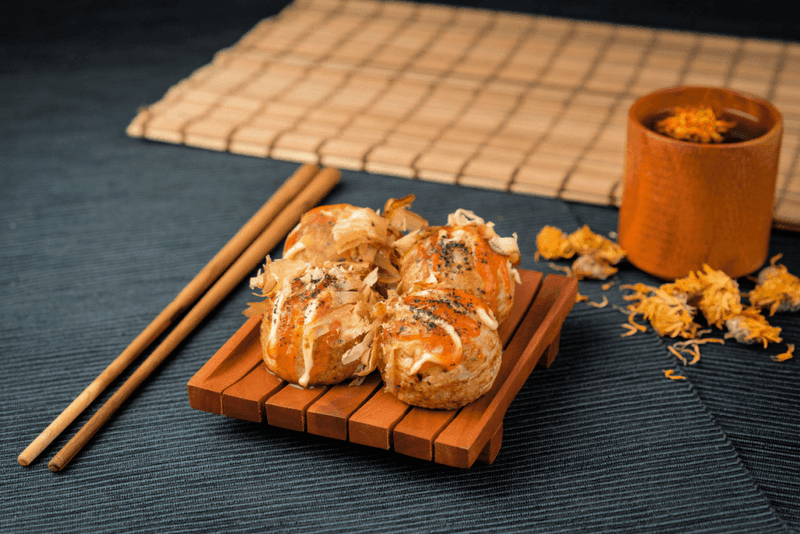
Ditch those sad yakisoba noodles and experience the magical street food sensation of Takoyaki! These golden, spherical treats are crispy outside, custardy inside, and hide tender pieces of octopus at their center—a textural wonderland in every bite.
Cooked in special dimpled pans, the batter puffs up around each octopus morsel while being constantly rotated to achieve their perfect ball shape. The finishing touches make them extraordinary: a drizzle of sweet-savory takoyaki sauce, Japanese mayo, a sprinkle of aonori seaweed, and dancing bonito flakes that wave in the heat.
13. Skip: Dragon Roll
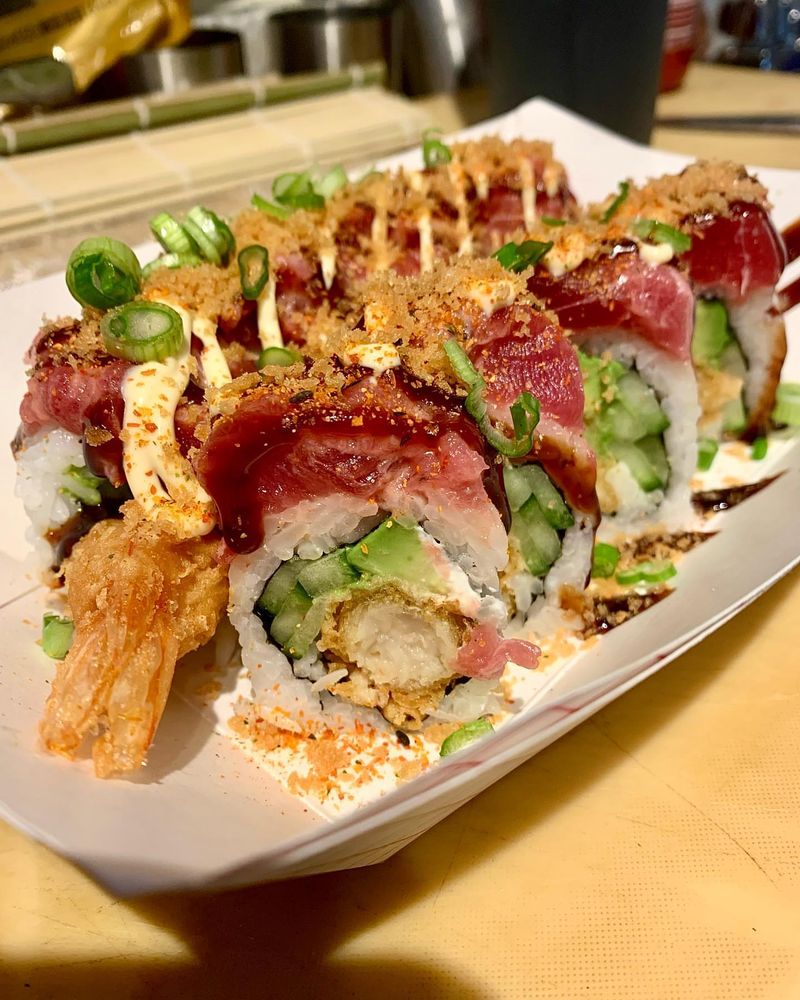
Dragon rolls are the peacocks of the sushi world—all show, no substance. These elaborate creations with their decorative avocado “scales” and eel toppings might look impressive on Instagram, but they represent everything that’s wrong with Americanized sushi.
The massive size makes proper eating impossible—you can’t dip it in soy sauce or consume it in one bite as traditional nigiri is meant to be eaten. The multitude of competing ingredients (typically shrimp tempura, avocado, eel, and multiple sauces) creates flavor chaos rather than harmony.
14. Order Instead: Yakiniku
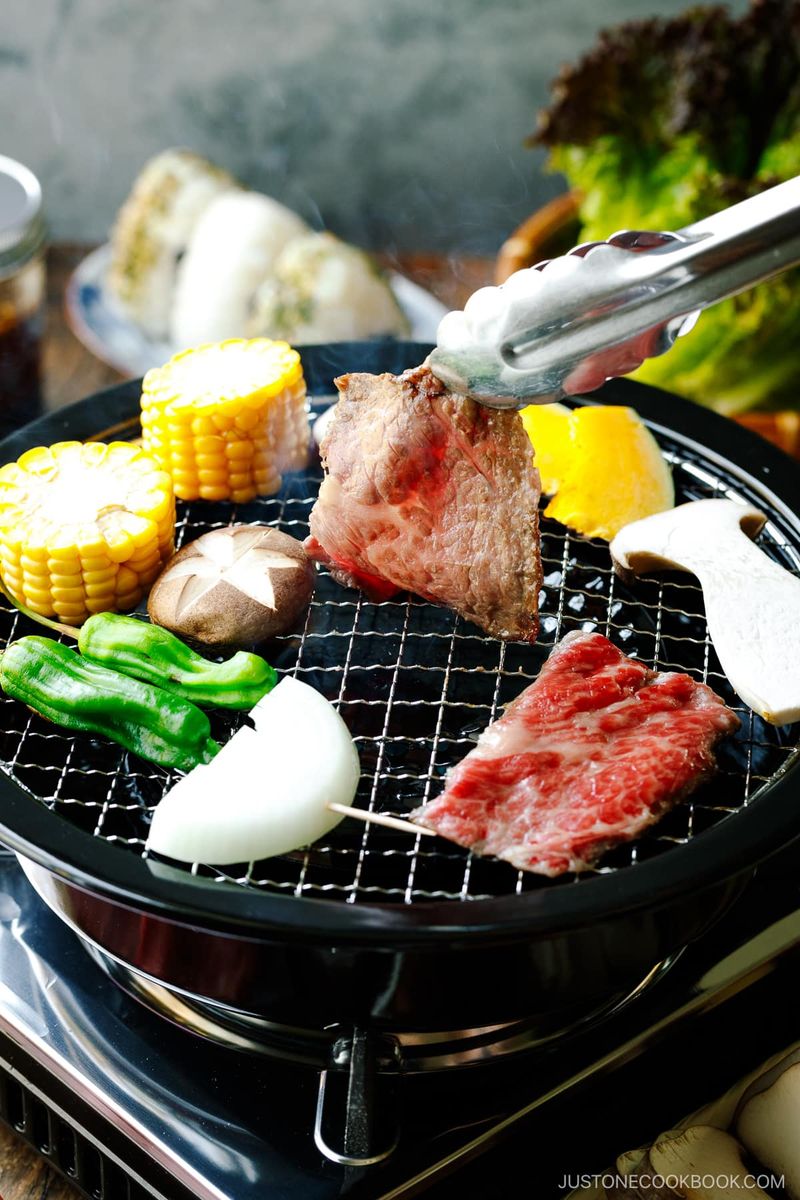
Forget those overhyped dragon rolls and embrace the primal joy of Yakiniku! This interactive Japanese BBQ experience puts you in control as you grill premium-quality meat slices on a tabletop charcoal or gas grill built right into your table.
Thinly sliced beef is the star—from marbled short rib to tender tongue—each cut offering distinct flavors and textures. The meat needs minimal seasoning; a quick dip in tare sauce (sweet soy-based) or simple salt is all that’s required. Many restaurants offer assorted vegetables for grilling alongside.
15. Skip: Edamame With Salt
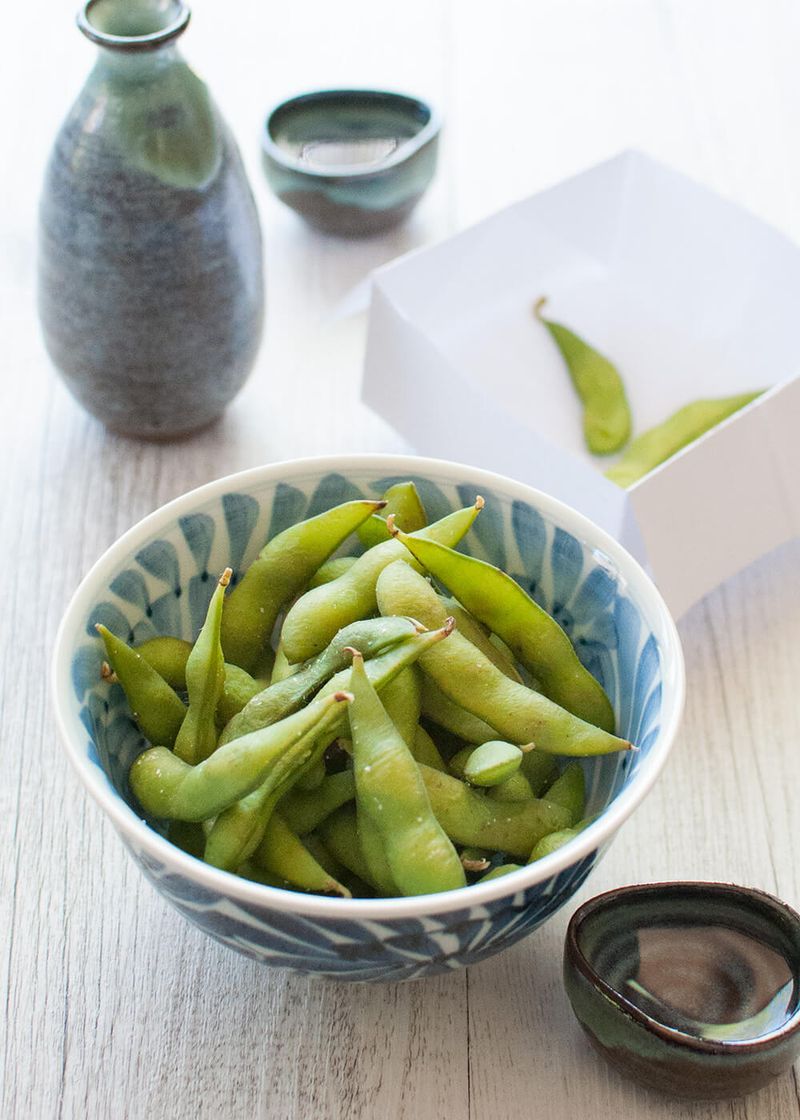
Plain salted edamame might be the most overpriced appetizer in Japanese restaurants. These basic boiled soybeans sprinkled with salt require zero culinary skill and cost pennies to produce, yet restaurants charge premium prices for what’s essentially a bean in its natural packaging.
While there’s nothing inherently wrong with edamame, they’re the culinary equivalent of elevator music—forgettable background filler taking up valuable stomach space. Most restaurants serve them straight from the freezer, boiled, and hit with salt—hardly showcasing Japanese culinary expertise.
16. Order Instead: Kaisendon

Skip those boring beans and feast like royalty with Kaisendon! This spectacular seafood-topped rice bowl showcases the absolute freshest fish and shellfish available that day, artfully arranged in a colorful display that’s as beautiful as it is delicious.
Unlike fixed-ingredient dishes, kaisendon varies with each restaurant and season. You might find buttery uni (sea urchin), sweet amaebi (raw shrimp), tender scallops, and various cuts of the day’s best fish. The seafood rests on perfectly seasoned sushi rice, often with garnishes like pickled ginger, wasabi, and shredded nori.
17. Skip: Gyoza
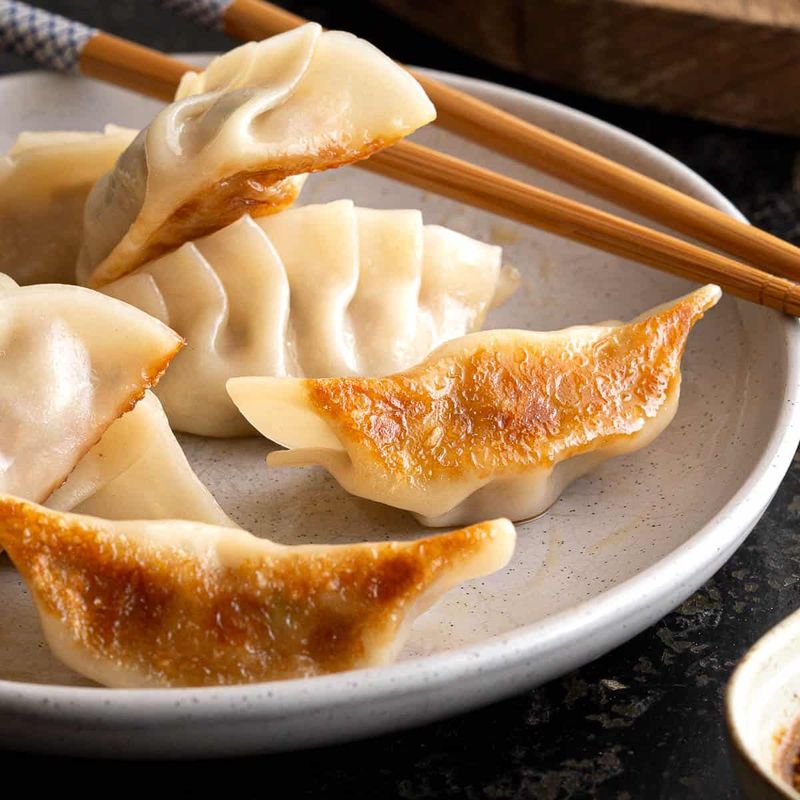
Most gyoza served in American Japanese restaurants deserve a moment of silence. These sad dumplings are usually straight from the freezer to your plate, with mass-produced wrappers that lack proper chew and fillings that taste suspiciously uniform across different establishments.
The problem isn’t gyoza themselves—it’s that few Japanese restaurants in America make them from scratch. The telltale signs: perfectly identical shapes, rubbery wrappers, and fillings with the texture of paste rather than distinct ingredients.
18. Order Instead: Okonomiyaki
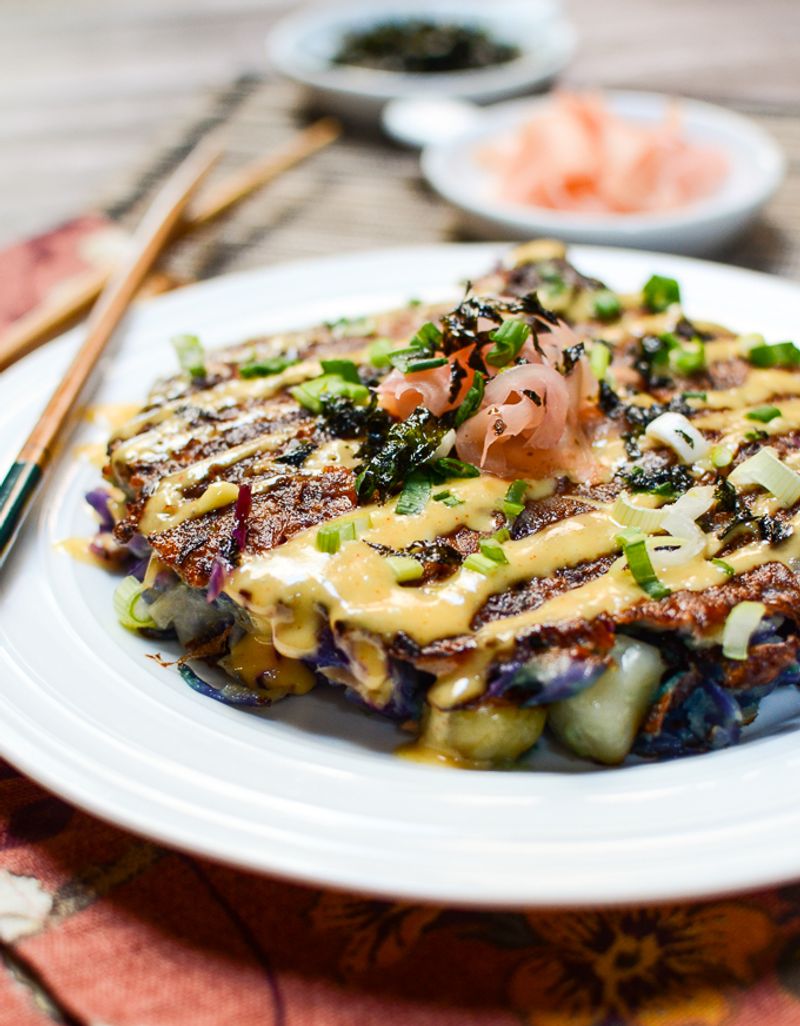
Banish those boring frozen dumplings and discover the interactive delight of Okonomiyaki! This savory Japanese pancake—whose name literally means “cook what you like”—is a customizable flavor bomb that showcases regional Japanese cooking at its most creative.
The Osaka-style version combines cabbage, pork belly, and a wheat-based batter into a thick, fluffy cake that’s grilled until crispy outside while remaining tender inside. The magic happens with the toppings: sweet-savory okonomiyaki sauce, Japanese mayo, aonori seaweed, bonito flakes, and pickled ginger.
19. Skip: Katsu Don
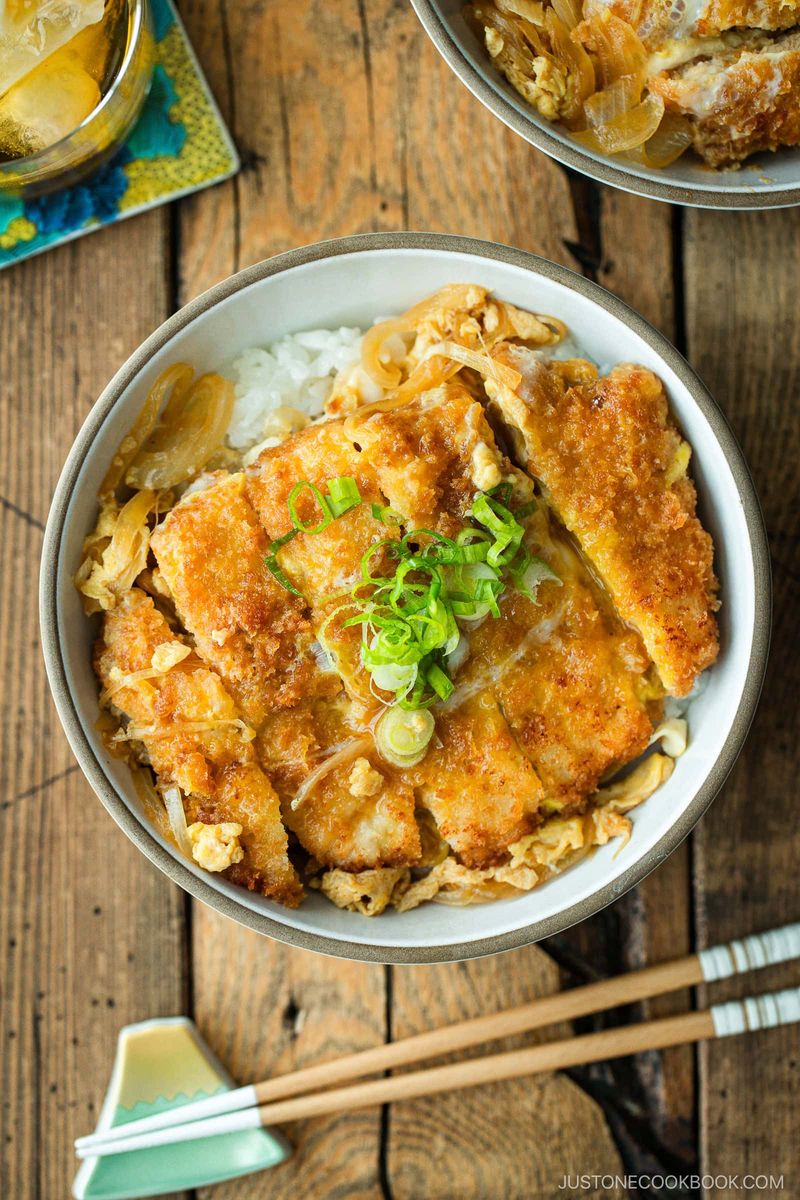
Katsu Don sounds promising—a golden-fried pork cutlet with egg and onions over rice—but the reality in most American Japanese restaurants is a soggy disappointment. The critical flaw? Timing.
The breaded cutlet gets smothered in egg mixture and simmered in sauce, destroying the crispy coating that’s the whole point of katsu in the first place. What arrives is often a mushy mess with a texture like wet cardboard rather than the contrasting textures the dish should provide.
20. Order Instead: Udon Sukiyaki
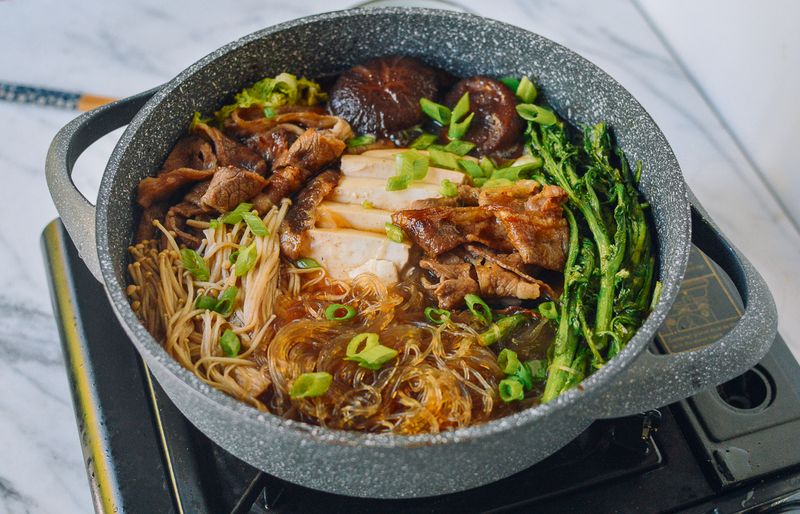
Forget that soggy katsu and warm your soul with Udon Sukiyaki! This brilliant hybrid combines two Japanese classics: thick, chewy udon noodles and the rich, sweet-savory broth of sukiyaki filled with thinly sliced beef and seasonal vegetables.
The broth—a complex blend of soy sauce, mirin, and dashi—becomes the perfect vehicle for the springy noodles to absorb flavor. Tender beef slices cook quickly in the hot liquid, while vegetables like napa cabbage, shiitake mushrooms, and green onions add layers of texture and nutrition.

